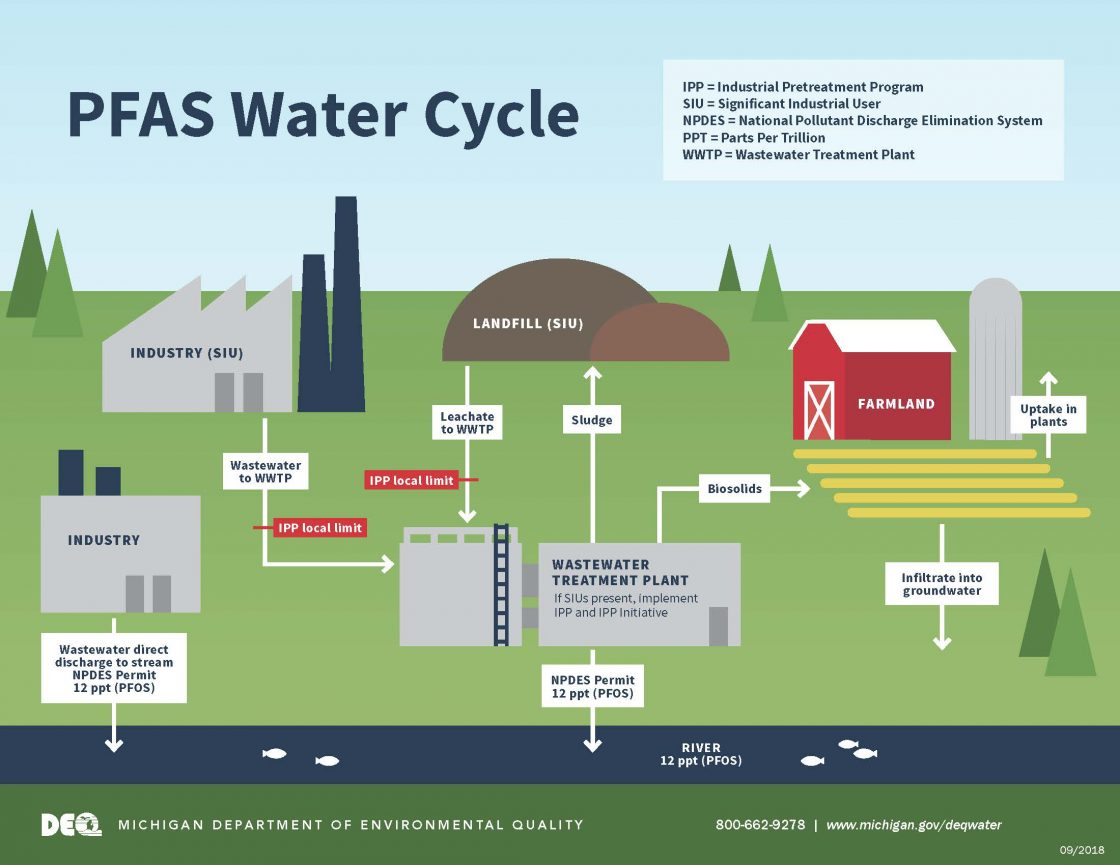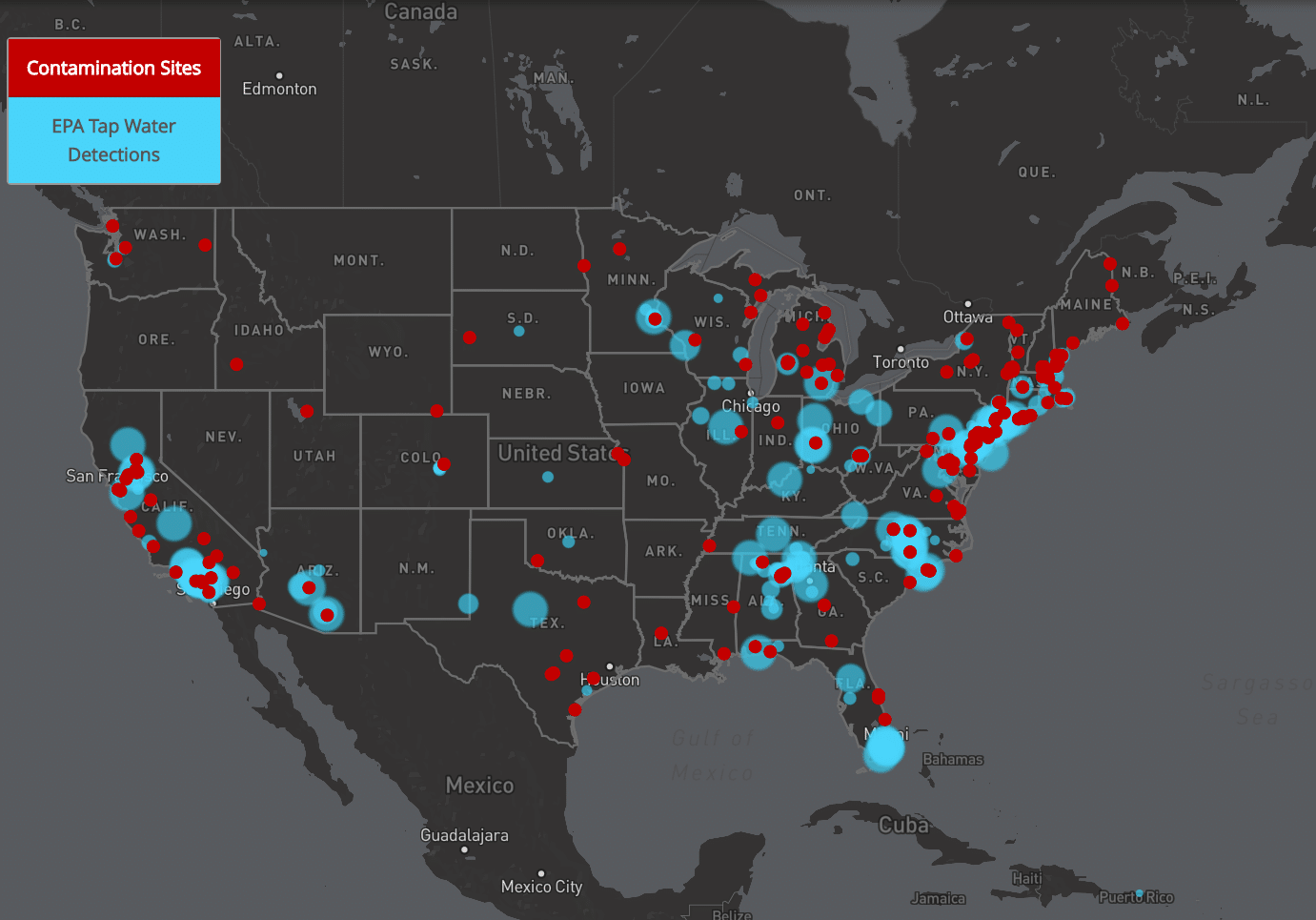The PFAS Action Act
A bipartisan senate bill was introduced on March 1 to mandate the Environmental Protection Agency (EPA) classify Per- and Polyfluoroalkyl Substances (PFAS) as hazardous substances eligible for cleanup under the Superfund toxics law, a massive step in efforts to eliminate widespread contamination by these compounds across the country. Under the PFAS Action Act of 2019, legislation would require responsible parties to report the excess release of PFAS into the environment and allow the government to sue polluters to recover the costs of cleanup.
Scott Faber, Senior Vice President of Government Affairs at the Environmental Working Group (EWG) said that “this proposal could assist potentially hundreds of communities throughout the country struggling with PFAS contamination by securing the resources required to begin the cleanup process and holding polluters accountable.”
What are PFAS?
PFAS are manmade chemicals that have been used in both industry and consumer products since the 1950s. The most common products that PFAS are used in include:
- Non-stick cookware
- Products that resist grease, water and oil
- Water-repellant clothing
- Stain resistant fabrics
- Firefighting foams
- Some cosmetics
Exposure to PFAS can happen through a variety of ways including:
- Drinking contaminated municipal water or private well water
- Eating fish caught from a source that was contaminated with PFAS
- Swallowing contaminated soil or dust
- Eating food that was packaged in material containing PFAS
- Using consumer products including the ones listed above

As PFAS are produced and used, they can migrate into soil and water inducing hugely detrimental effects on the environment, people, and animals. While scientists are still learning about the health effects to exposure of PFAS, some studies show that PFAS exposure may affect:
- Growth
- Learning
- Behavior of infants and children
- The ability to get pregnant
- Natural hormones in the body
- Cholesterol levels
- Immune system
- Risk of cancer
Why is the PFAS Action Act of 2019 Necessary?
Tests performed by the EPA have detected PFAS pollution of public water supplies for 16 million Americans in 33 states, a statistic that is considered a severe underestimate of the scope of the problem. EWG and researchers at Boston’s Northeastern University have tracked 172 PFAS contamination sites in 40 states – a number that does not include public water systems with PFAS contamination. In May 2018, EWG released a data analysis that estimated more than 1,500 drinking water systems, serving up to 110 million Americans, may be contaminated with similar fluorinated chemicals.
The map below from EWG and SSEHRI at Northeastern University shows contamination sites and EPA tap water detections. Click here to view an interactive version of this map. The blue circles show where PFAS chemicals were detected between 2013 and 2016 in public drinking water systems, and the red circles show sites in Northeastern’s PFAS Contamination Site Tracker.

Should this bill be enacted into law, these 1,500 contaminated drinking water systems across the country would soon be cleaned up as part both short-term and long-term actions included in the Action Plan, potentially resulting in clean water supplies and safe drinking water.
PFAS Action Act – Action Items
The EPA is leading the national effort to understand PFAS and reduce risks to the public through implementation of this Action Plan and through active engagement and partnership with other federal agencies, states, tribes, industry groups, associations, local communities, and the public.
Key actions to PFAS related challenges include:
- Expanding toxicity information for PFAS
- Developing new tools to characterize PFAS in the environment
- Evaluating cleanup approaches
- Developing guidance to facilitate the cleanup of contaminated groundwater
- Using enforcement tools to address PFAS exposure in the environment
- Using legal tools such as those in the Toxic Substances Control Act (TSCA) to prevent future PFAS contamination
- Addressing PFAS in drinking water using regulatory and other tools
- Developing new tools and materials to communicate about PFAS
(See all priority actions, short-term actions, and long-term actions here.)
1ewg.org
2shaheen.senate.gov
3epa.org
4atsdr.cdc.gov
5michigan.gov
